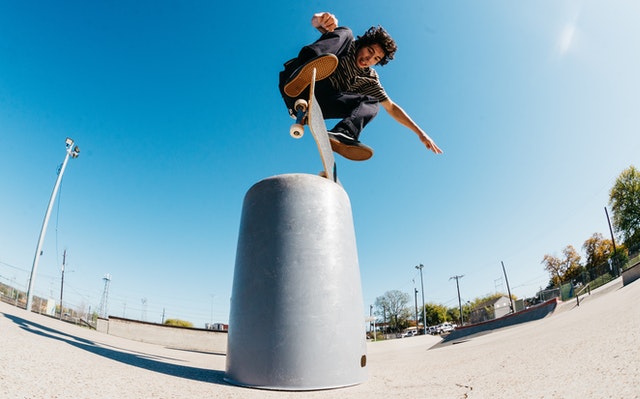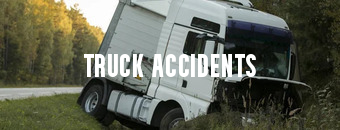- Our Firm
- Personal Injury
-
-
-
Personal Injury Lawyers
-
-
-
-
-
-
Injured in an accident? At Diamond & Diamond, our team of lawyers rely on their reputation in the field and extensive experience in personal injury to provide clients with a dedicated support system over the duration of their case.
-
-
-
-
-
HAVE YOU RECENTLY BEEN INJURED IN AN ACCIDENT?
-
-
-
- Corporate
- Class Action

Dangers of Extreme Sports Facilities – What Operators Will Not Report
#AskJoshuaHimel
The dangers and risks associated with extreme sports that keep many people away from them are also what attract those individuals who choose to participate. News reports of children and young adults suffering serious, life-altering injuries while participating in high-risk activities at privately owned facilities highlight not only the dangers but also the need for increased regulatory oversight of a growing industry.
The difficulty of getting information about accidents
Ontario is one of many places in Canada offering people the chance to experience the adrenaline rush associated with participation in high-risk activities, including:
- Skydiving
- Bungie jumping
- Parasailing
- Rock climbing
- Mountain biking
- Heli-skiing
- Ice climbing
- Snow-kiting
- White-water rafting
- Skateboarding
People participating in dangerous activities assume the risks associated with them, but assessing the risk of being injured is difficult when it comes to extreme sports facilities. Although owners admit they keep track of accidents and injuries occurring at their facilities, there is currently no requirement that the information be made available to the public.
Even though facilities do not make injury reports public, records of hospitalizations related to winter sports from the Canadian Institute for Health Information showed 5,600 people were seriously injured and hospitalized in 2011. This data is not limited to extreme sports, but it does offer some insight into the extent of the danger and risk of injury associated with recreational activities.
Assumption of risk and extreme sports
The Occupiers’ Liability Act in Ontario makes owners and occupiers of facilities liable for injuries on their land or in their buildings caused either by the property condition or by the nature of the activities engaged in while on it. Besides the owners and occupiers, the law imposes a duty to take reasonable care to ensure the safety of others using the property on anyone having control of the facilities or the activities taking place on or within them.
When someone participates in a risky activity, owners of a facility might rely upon a provision of the law dealing with a participant’s assumption of the risks customarily associated with the activity. For instance, there is a risk of falling associated with rock climbing that an adult would normally perceive as being part that particular activity. However, when children are the participants, as they are with many extreme sports, experts point out that young people spend less time considering the risks and dangers of an activity than do adults.
Because of the lack of government oversight of extreme sports in which children might participate, parents are encouraged to assess the safety of the facilities for themselves. One way to do this is to ask questions about the following:
- Number of staff members supervising activities
- Emergency response and safety training received by staff
- Availability of first aid equipment at site
- Pre-activity instruction to participants
Experts recommend that facilities have at least one staff member supervising activities for every five participants.
Holding extreme sports facilities liable for injuries
Government inspections and other oversight of facilities offering activities with a high risk of serious injury or death would help to establish a safety standard by which they operate. Until laws and regulations are enacted and enforced, participants suffering injuries can rely upon principles of negligence and the Occupiers’ Liability Act to hold facilities liable for the payment of adequate compensation.
Compassionate personal injury lawyers when injuries occur
The personal injury lawyers at Diamond and Diamond have years of experience handling all types of personal injury claims and obtaining the compensation their clients need to get on with their lives. Contact our 24/7 injury hotline at 1-800-567-HURT or visit our website to speak to someone now about your claim. Consultations are free, and we have offices located throughout Ontario.
Need a Lawyer?
We are here 24/7 to address your case. You can speak with a lawyer to request a consultation.
1-800-567-HURTGet started with a free consultation
OUR TEAM
- Ishmeet Sandhu
- Nolan Bachmann
- Annamarie Demaj
- Jeffrey Hum
- Tofunmi Adeyeye
- Alessia De Gasperis
- Amandeep Chawla
- Jeremy Tsoi
- Kimiya Razin
- Shir Zisckind
- Gray Sinden
- Shelly Bard
- Christian Brown
- Daly Canie
- Tanveer Sohal
- Prianka Virdi
- Noah Brownstone
- Justin Kaminker
- Harinder S. Bhatti
- Craig Yargeau
- Kiran Birk
- Amit Singh
- Andrei Teju
- Maria Zahid
- Matthew Douglas
- Jacob Elyk
- Harry Gill
- Kristina Olivo
- Egi Bano
- Cam Woolley
- Charles Thompson
- Alexandra McCallum
- John Sime
- Allan Cocunato
- Patrick Poupore
- Erika Henderson
- Marina Korshunova
- Brandon Handelman
- Regeena Alapat
- Ryna Kim
- Natalia Poliakova
- Isaac Zisckind
- Manpreet Bhogal
- Mathura Santhirasegaram
- Nikolai Singh
- Sandra Zisckind
- Jeremy Diamond
- Michael Blois
- Darryl Singer
- Nadia Condotta
- Tinashe Madzingo
- Megan Armstrong
- Veronica D’Angelo
- Corey J. Sax
- Scott Tottle
- Steven Wilder
- TJ Gogna
- Jillian Carrington
- Joshua Himel
- Simon Diamond
- Cory Rubin
- Simon Mariani
- Brandon Greenwood
- Basil Bansal
- Nastassia Ivanova
- Tania Fleming
- George Laloshi
- Patrycja Majchrowicz
- Diana Iakossavas
- Dior Africa
- Alex Ragozzino
- Liana Saccucci
- Richard J. Chang
Head Offices
Main Offices
Barrie
Main Office
168 Bayfield Street
Calgary
Main Office
1331 Macleod Trail SE, Suite 645
Edmonton
Head Office
4246 97 Street NW, Unit 103
Halifax
Consultation Office
1701 Hollis St
London
Main Office
256 Pall Mall St, Suite 102
Oshawa
Consultation Office
50 Richmond Street E, Unit # 108 B
Ottawa
Main Office
955 Green Valley Crescent, Unit 315
Sudbury
Main Office
31 Larch Street, Unit 300
Timmins
Main Office
120 Cedar Street South, Unit 002A
Toronto
Head Office
255 Consumers Road, 5th Floor
Vancouver
Head Office
1727 West Broadway, Suite 400
Windsor
Main Office
13158 Tecumseh Rd. E. Unit 3B
Additional Areas Served
Ontario
- Ajax
- Alberta
- Aurora
- Barrie
- Belleville
- Bowmanville
- Brampton
- Brantford
- Brockville
- Bracebridge
- Bradford
- Burlington
- Burnaby
- Calgary
- Chatham
- Cobourg
- Collingwood
- Cornwall
- Durham
- Edmonton
- Elliot Lake
- Etobicoke
- Georgetown
- Guelph
- Hamilton
- Huntsville
- Kanata
- Kelowna
- Kingston
- Kitchener
- Leamington
- London
- Markham
- Milton
- Mississauga
- Muskoka
- Niagara Falls
- Newcastle
- Newmarket
- North Bay
- North York
- Oakville
- Orangeville
- Orillia
- Oshawa
- Ottawa
- Owen Sound
- Parry Sound
- Perth
- Peterborough
- Pickering
- Prince Edward County
- Richmond
- Richmond Hill
- Sault Ste Marie
- Sarnia
- Scarborough
- St. Catharines
- St. Thomas
- Stouffville
- Sudbury
- Surrey
- Thunder Bay
- Timmins
- Toronto
- Uxbridge
- Vancouver
- Wallaceburg
- Waterloo
- Welland
- Whitby
- Windsor
- Woodstock













